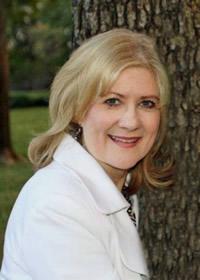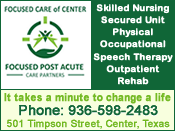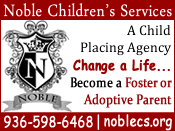 Janaury 17, 2019 - Patti Huff Smith hadn't thought much about her Texas roots until 2013 when her son, who was in high school at the time, wanted to know about his ancestors who might have fought in the Civil War. With the assistance of her 90-year-old grandmother, Mrs. Smith and her son began exploring her family's roots...and she hasn't stopped! In her program “Between the Lines: What Your Ancestors Didn't Tell You!”, delivered to the Timpson Area Genealogy and Heritage Society's January 16 meeting, Mrs. Smith revealed the value, and surprises, of using DNA in genealogical research.
Janaury 17, 2019 - Patti Huff Smith hadn't thought much about her Texas roots until 2013 when her son, who was in high school at the time, wanted to know about his ancestors who might have fought in the Civil War. With the assistance of her 90-year-old grandmother, Mrs. Smith and her son began exploring her family's roots...and she hasn't stopped! In her program “Between the Lines: What Your Ancestors Didn't Tell You!”, delivered to the Timpson Area Genealogy and Heritage Society's January 16 meeting, Mrs. Smith revealed the value, and surprises, of using DNA in genealogical research.
With the burgeoning popularity of DNA testing, the wealth of previously unavailable genetic relationship information contained in DNA databases has grown exponentially. A DNA test can determine if two people are related, if they descend from a common ancestor, if you are related to others with the same surname, and get an estimate of your ethnic origins. As Mrs. Smith pointed out, DNA testing can prove..or disprove..paper trail genealogical research and nearly always reveals relationships with previously unknown people. The potential for “dragging skeletons out of the closet” is significant, hence the title of Mrs. Smith's program, “What Your Ancestors Didn't Tell You”.
Mrs. Smith shared several of the surprises her DNA research has revealed, including one concerning one of her great-grandmother's children who “didn't look like the rest”. Shared DNA matches from the 42 DNA tests her family members have done established that her great-grandmother had had an affair with her sister's husband and that he, not her great-grandfather, was the father of this child. Though Mrs. Smith laughs about it, this is the sort of thing “your ancestors didn't tell you” that she cautions potential DNA testers to prepare for.
Mrs. Smith encourages everyone who has had a DNA test done to take the next step and download their raw DNA test results to GEDmatch.com. This makes your DNA part of the ever-expanding DNA database, compares your DNA with that of millions of others, and allows previously unknown genetic relationships to be revealed. For example, if you come from a family averaging 2-3 children per generation, you will have about 190 third cousins, 940 fourth cousins, and 4,700 fifth cousins. The likelihood that you know them all is not high!
For example, Mrs. Smith received correspondence from a 47 year-old man who, while acting as executor of his parents estate, was told by a sibling that he had been adopted. The shock of this revelation led him to a search for his birth parents through a DNA test, which revealed that he and Mrs. Smith were third cousins, though they had never met. Though the adoption records were sealed, Mrs. Smith offered to use her expertise to help the man locate his birth parents. Though the process was difficult, they were eventually located using DNA matching.
Anyone who has done genealogical research knows the frustration of hitting a “brick wall” in their search but Mrs. Smith showed how DNA testing can frequently get the researcher past the obstacle. A combination of traditional genealogical research methods with DNA testing creates opportunities only dreamed of by genealogists a couple of decades ago.
The Timpson Area Genealogical and Heritage Society meets on the third Wednesday of each month (next meeting February 20th) at 2PM in the Meeting Room of the Timpson Public Library, located on the corner of Austin and Bremond Streets in downtown Timpson. The public is invited.









